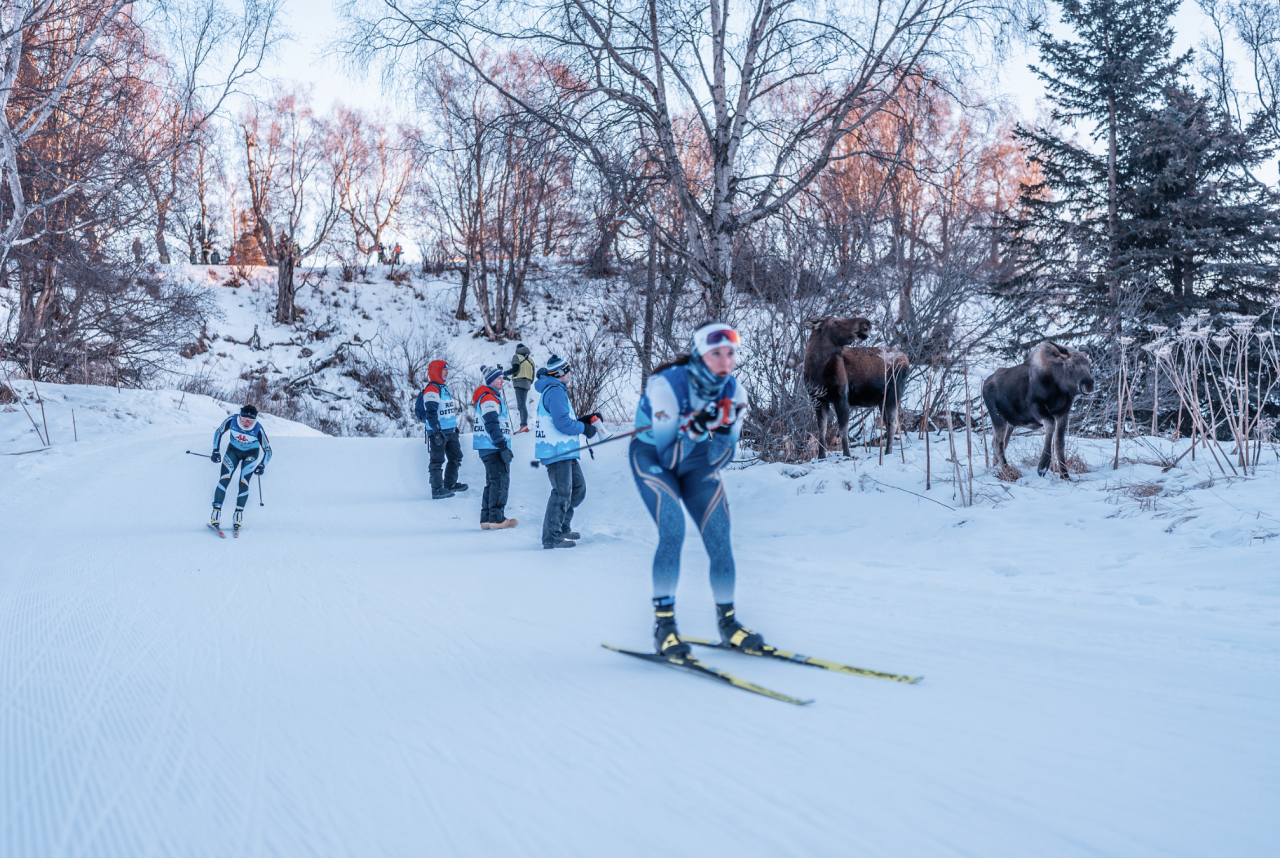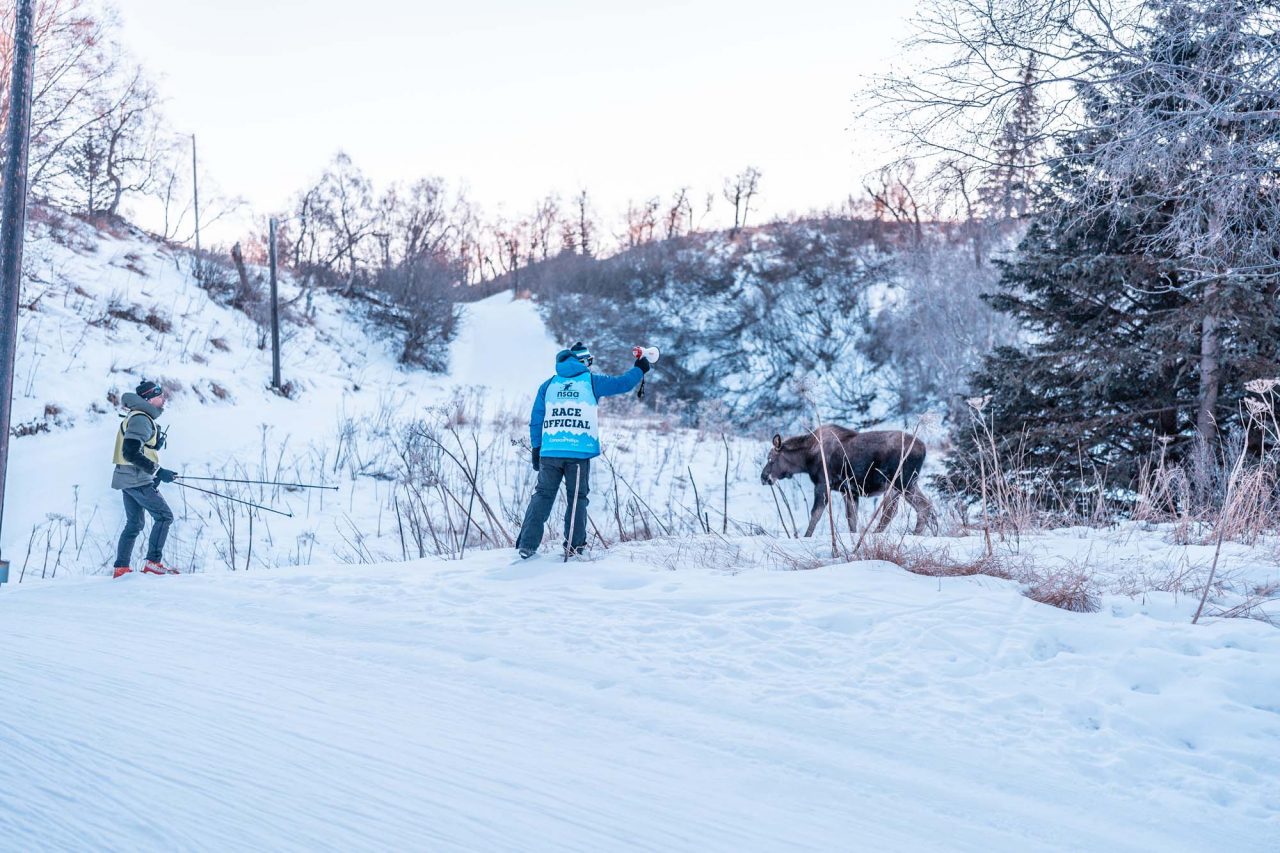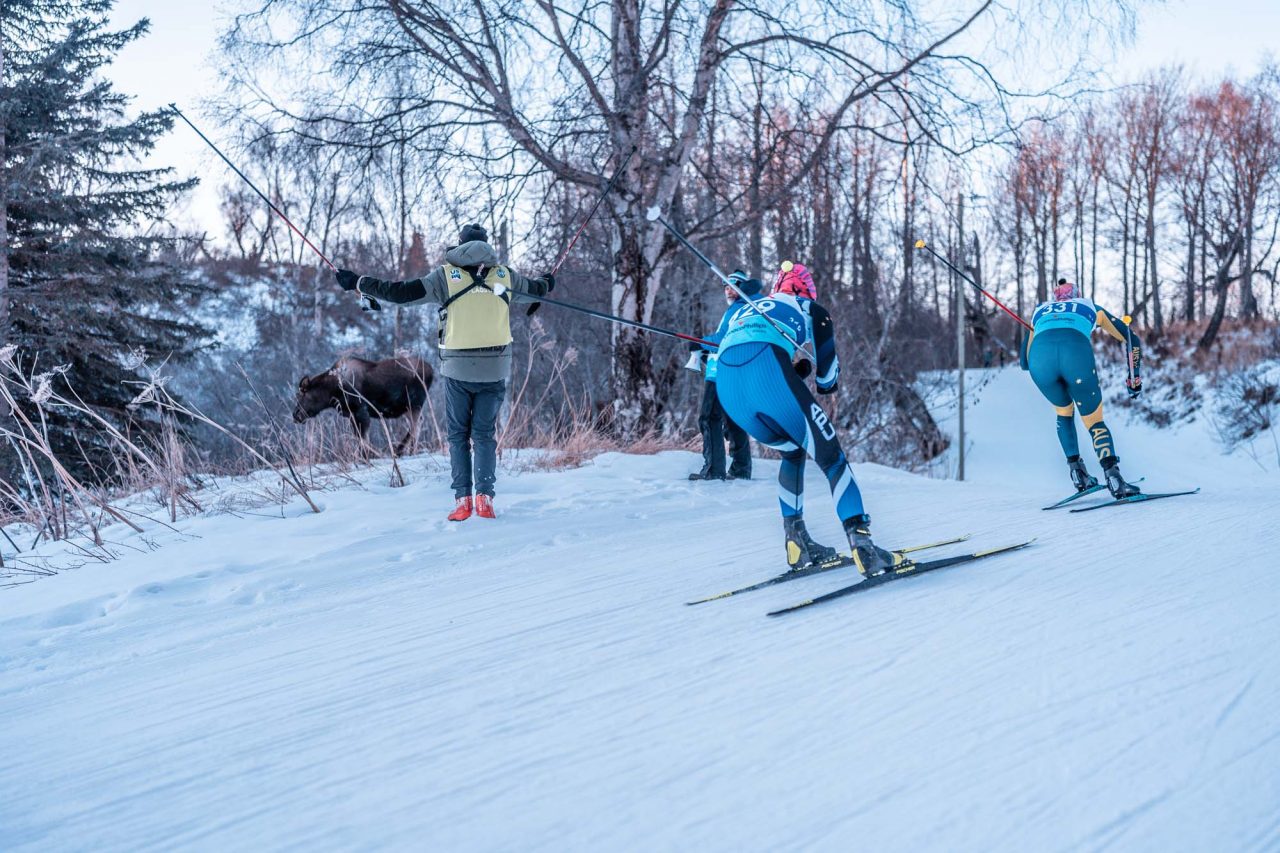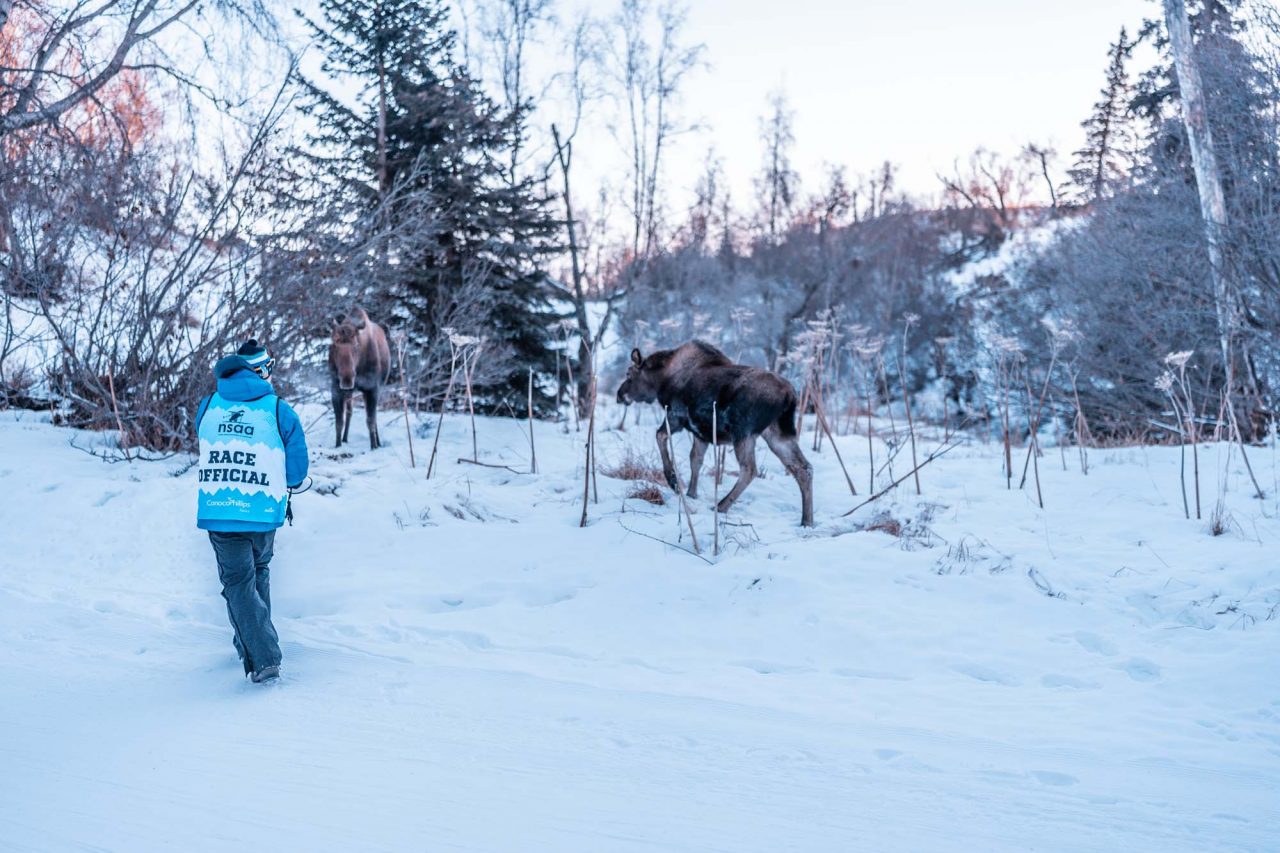
Racing was tight on the first day of the U.S. National Championships at Anchorage’s Kincaid Park, with winners in both the men’s and women’s events decided by less than 15 seconds.
The real drama, however, was in a quintessential Anchorage wildlife standoff — one that may have even altered the women’s podium.
Along a willowy downhill stretch toward the end of the five-kilometer race loop, volunteers and coaches engaged in a tense showdown with a moose and calf — trying, and ultimately failing, to keep them from crossing the trail as lycra-clad athletes zoomed by.
“If it had been a high school race, I think we probably would have said, ‘You know what? We need to send no more new people out on course for a bit — we’ll figure it out later,’” said Jeremy Littell, a volunteer who brandished a blaring megaphone in an unsuccessful effort to ward off the large ungulates. “But it is senior national championships, and that’s a little bit of a different story. People have a lot on the line.”
In the end, no moose, nor athletes, were harmed. But at least two women in the 10-kilometer race had hair-raisingly close shaves — one of which was captured on video, alongside Littell’s hazing efforts.
Coaches and athletes were all in agreement, however: Don’t blame the moose.
“They live there. And we get to race in their habitat,” said Tilde Bångman, a Swedish athlete competing for the University of Colorado Boulder’s ski team who narrowly dodged the moose — costing her precious seconds in a tightly fought competition. She added: “You can’t control a wild animal.”
Moose encounters are a long, venerable tradition of Anchorage athletics, and especially of cross-country ski races. The willows and alders that line many of the city’s trails double as moose feed, and almost any resident who trains in the woods can tell a story of a workout being disrupted or diverted.
“Every week, and sometimes more than once, we have to change our interval plan because of a moose,” said Trond Flagstad, the coach of the University of Alaska Anchorage’s cross-country ski team. He recounted an incident earlier this winter in which a moose charged one of his athletes in the middle of a ski workout.
“He goes down on the ground, covering his head, and the moose is just standing over him — and then it just moves off,” he said. (Flagstad’s team spotted the moose in the area for a couple of weeks afterward, and named it after the shaken but unharmed athlete.)
Numerous editions of the Tour of Anchorage — a 30-mile race from the city’s hillside to the coast — have seen top athletes delayed by moose in the middle of the trail. A police officer once shot an aggressive moose during a cross-country running race at Kincaid Park.

“I was standing between the moose and the girls,” the shotgun-toting officer — the father to one of the competitors — later told the Anchorage Daily News. “I was standing there the whole race. I planned on him not getting to the girls.”
Matt Pauli, the chief of competition for this week’s national championship ski races at Kincaid, said he included a slide of an “amorous cow and bull” moose in his pre-race presentation, to warn team captains about what to expect.
“I show that and say, ‘Hey, we’ll do what we can do mitigate,’” he said. “But we’re not stopping the race.”
Volunteers and coaches made a textbook execution of the Pauli method during the women’s race Thursday — throwing an array of deterrents at the cow and calf to allow athletes to pass by.
Littell, the megaphone-wielding volunteer, said the moose were also present during the men’s race earlier in the day, though peacefully bedded down. After lunch, he said, the animals got up and started moving.
Unfortunately for organizers, the race format did not lend itself to easy moose management: Rather than one big pack of athletes racing around the course together, the event was a time-trial style individual-start race, where skiers left the gate one at a time every 30 seconds.

For a while, Littell said, the moose seemed content to browse on the side of the trail, and with a little help from Flagstad, who was passing by, they kept the animals clear of the athletes.
But then, Littell said, the moose “got it in their heads that they wanted to cross the course, and it got more and more difficult to keep them in place.”
“A couple other course people came along, and we kind of got in close with them — used the megaphone, used a lot of voice, used a lot of raised arms, sort of general moose intimidation tactics. And for a while, that worked,” he said. “And then they weren’t having it any more. And we lost.”
The first time the moose crossed the trail, they moved quickly and didn’t cause problems. But then, they returned, pushed back down toward the course by other volunteers who were trying to keep them off of a different segment of trail.
“That’s when they got in the trail and didn’t want to leave,” Littell said.
Enter Bångman, the Swedish skier.
“You know, when you’re in a race, I was pretty locked in — I don’t see a lot of things going on outside the course,” she said. “I just come down this fast downhill and I see a volunteer in the middle of the course. And I get so confused. And then I see this huge moose starting to walk towards me.”
Bångman pumped the brakes, sliding her skis a bit.
“But then I realized, if I stop-slide, I will come to a stop right by the moose, which would probably be worse,” she said. “So, I was like, ‘Well, I’ll try to just send it and hope it doesn’t chase me.’”
Bångman said she saw a volunteer jump out in front of the moose; she was worried he was about to get stomped. But she snuck past, with no harm done — except, perhaps, to Bångman’s finish time.
She ended up in sixth place, less than five seconds from the podium, and guessed she’d lost perhaps a few seconds when she slowed for the moose.
“But, you know, that’s a part of racing at Kincaid, isn’t it?” she said. “Some extra excitement.”

Littell, reached by phone a day later, said he was a little nervous about publicizing his moose intimidation efforts, stressing that he’s typically “pretty cautious about the animals.”
The volunteers, he said, were “trying to balance skier safety first, volunteer safety second, and moose safety as a close third.”
Littell works for a federal agency, he said, and he’s frequently instructed that “no altercation is worth the effort.” But, he added: “I wasn’t on the clock.”
Nathaniel Herz
Nat Herz is an Alaska-based journalist who moonlights for FasterSkier as an occasional reporter and podcast host. He was FasterSkier's full-time reporter in 2010 and 2011.



